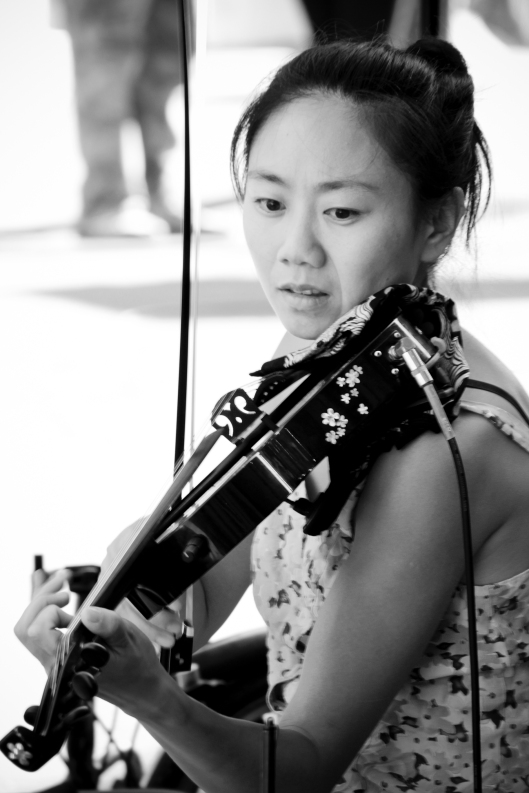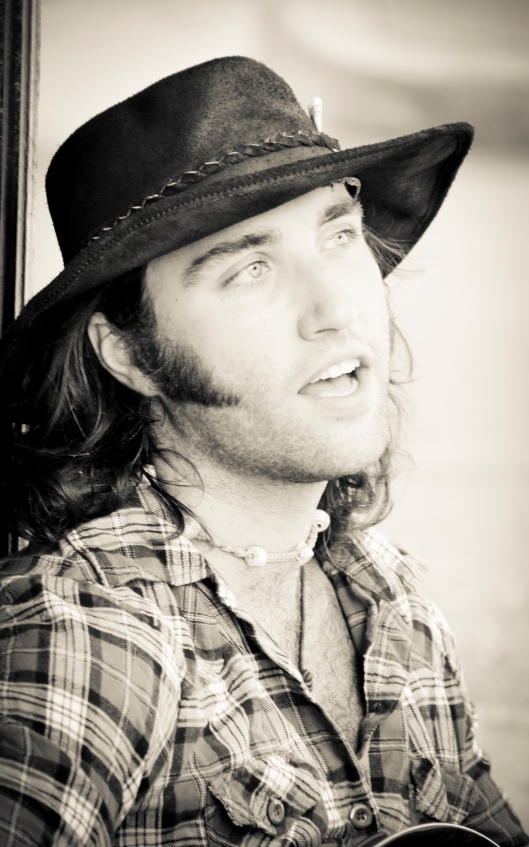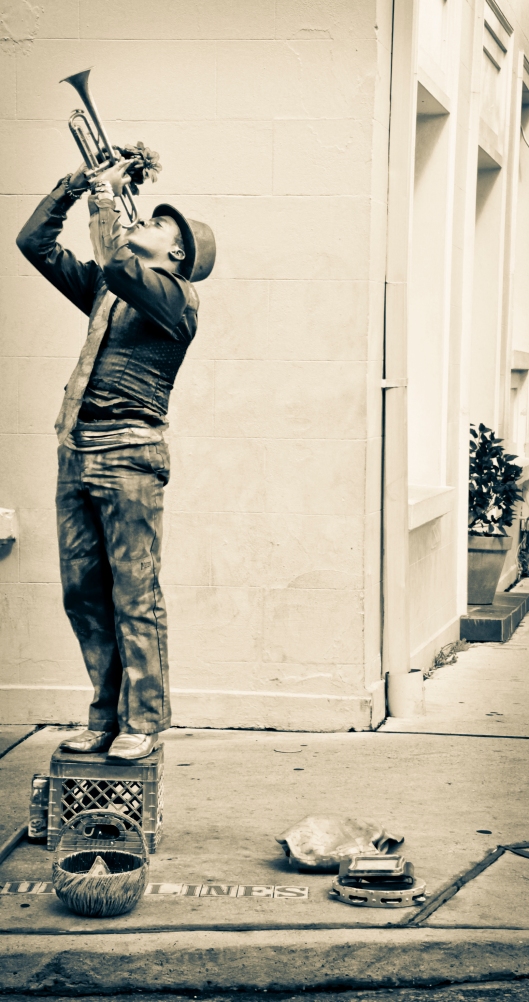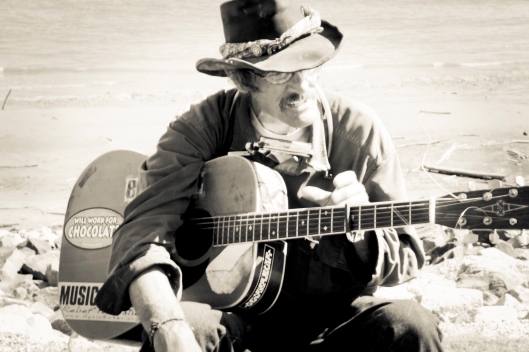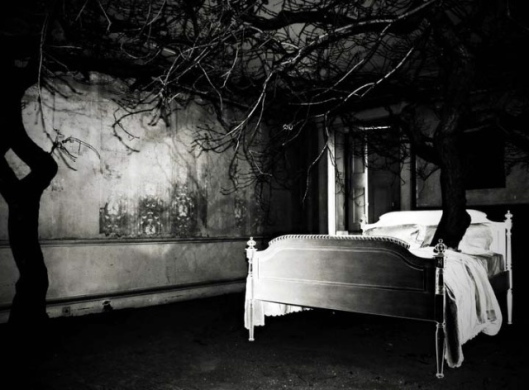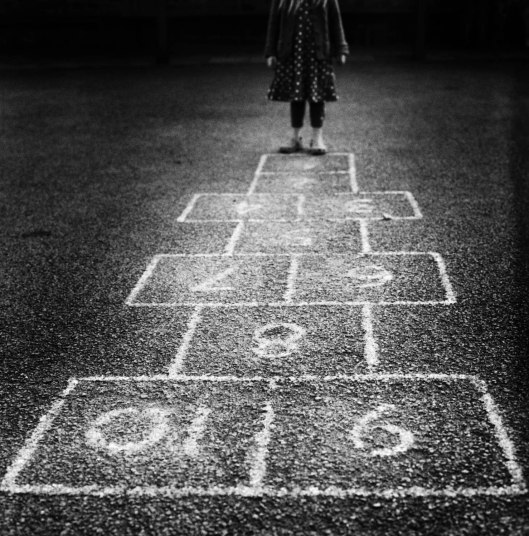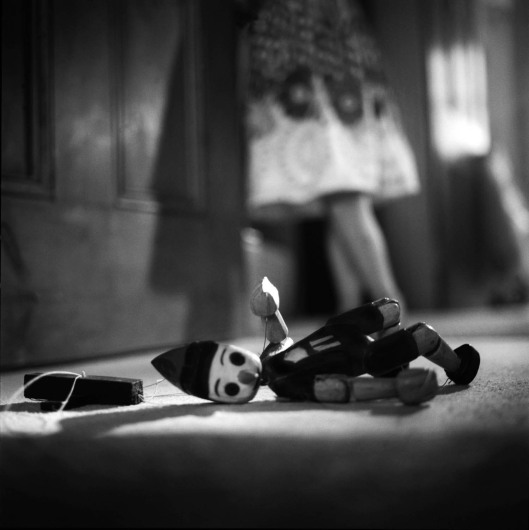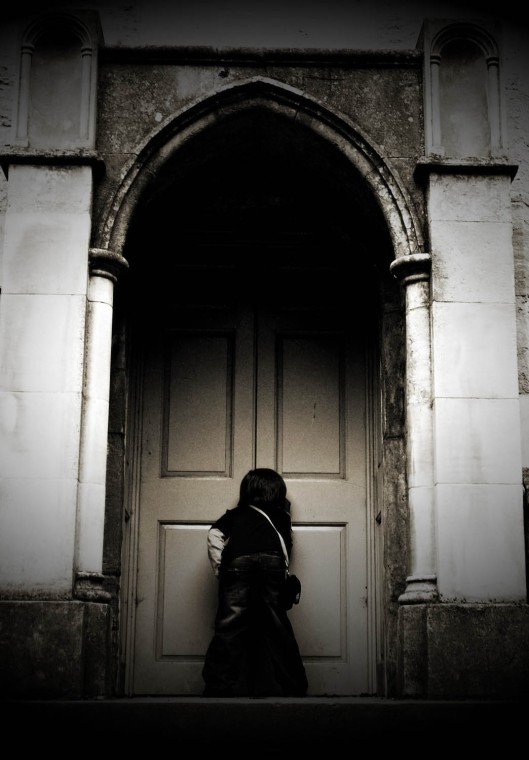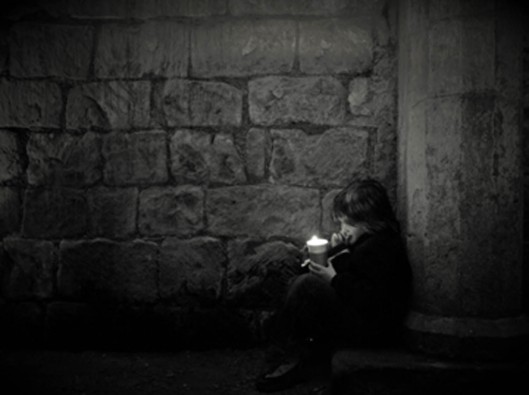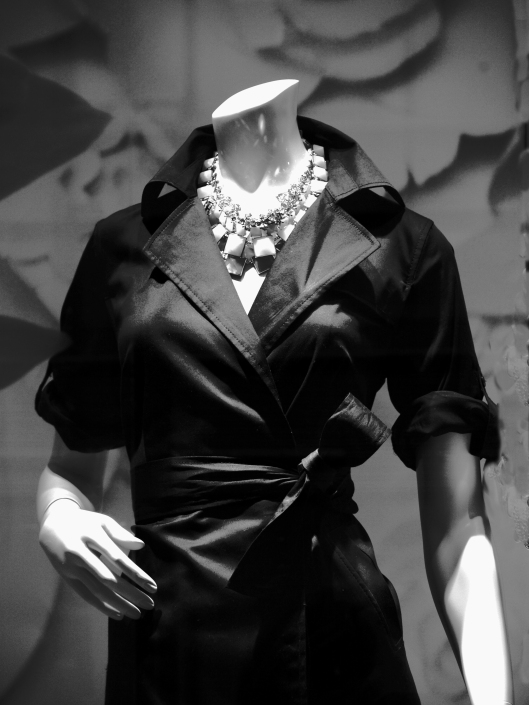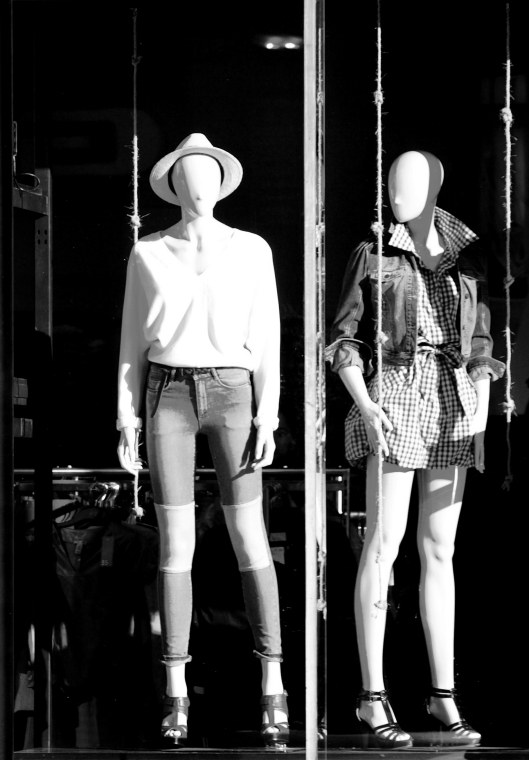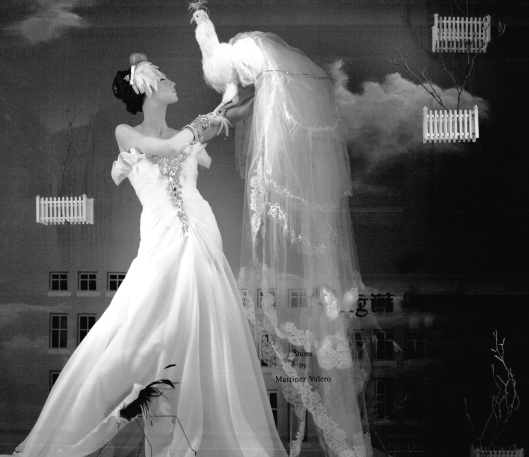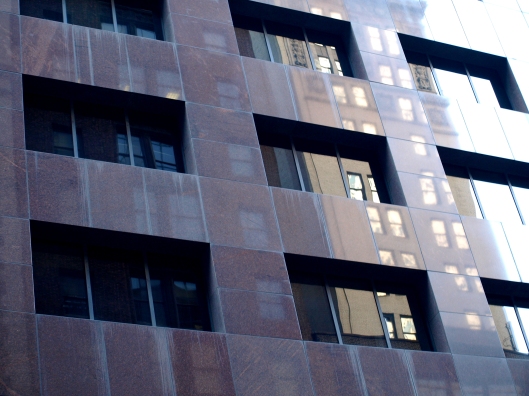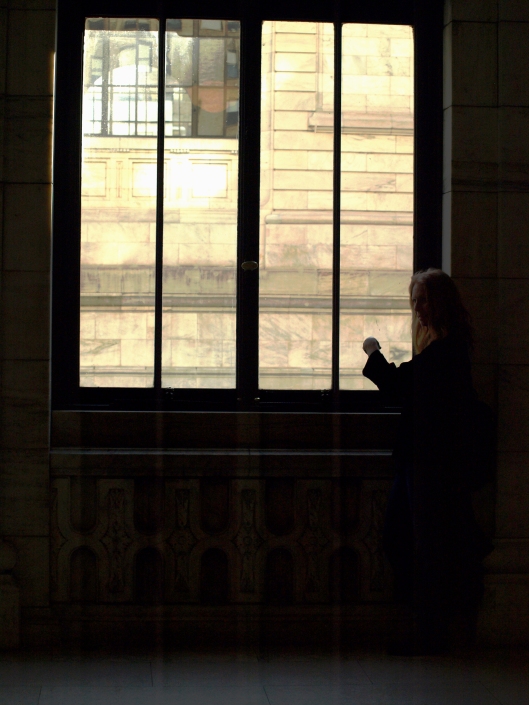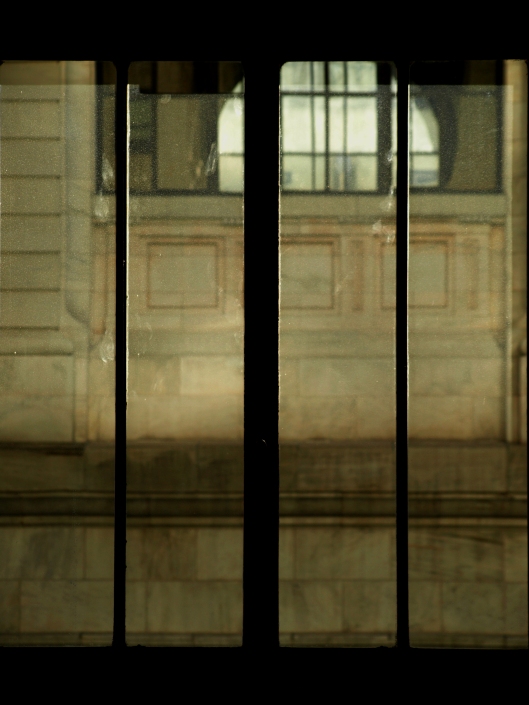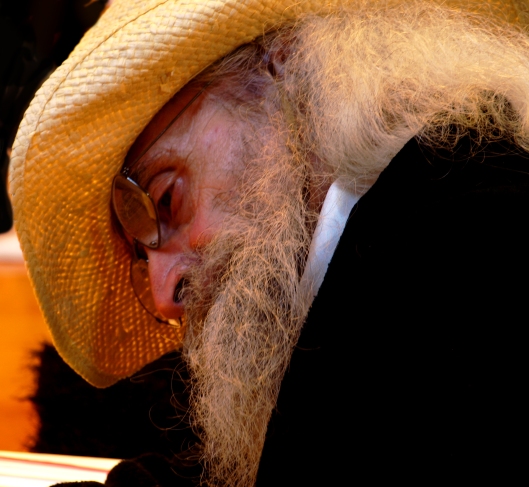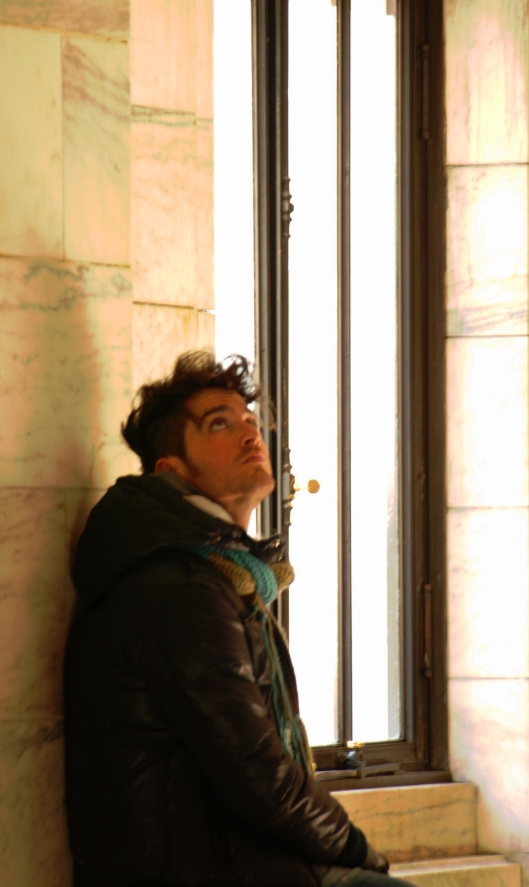Here are just a few of the Street Musicians I met while in the French Quarter. Royal Street is my favorite street for music, also for art galleries and for people watching. Many of the musicians are dressed in period clothing, like the 1930 and 1940’s, its adds another layer to the texture of the romantic illusion of the place.
Debbie Fleming Caffrey
Featured
Debbie Fleming Caffery had received the Louisiana Endowment for the Humanities, “Michael P. Smith Documentary Photography Award”. I studied with Debbie at the New Orleans Photography Workshop and she is truly amazing. She has been photographing people in Louisiana for over 30 years; the sugar cane workers, Cajun culture and the aftermath of Katrina. She completed a Fellows project for the Open Society Foundation that George Soros started in 1984 for the Fellows Project, in which she documented the effect of Katrina on the African American community, which can be viewed here.


Workers burning the sugar cane after harvest in Louisiana

Form 1995 Cajun Mardi Gras
Congratulations Debbie, no one deserved this award more.
New Photographer Interview – UK Photographer,Deborah Parkin
Featured
Tags
"British photography", "Deborah parkin"photography, "medium format photography", black and white, english, Northumberland, UK
I have had the pleasure of interviewing UK, photographer, Deborah Parkin for the first interview of 2010. Deborah comes from Hexham, Northumberland near the Scottish border.
Deborah’s images are black and white and she works with a medium format camera. What I am most attracted to about her work is the Film noir, Hitchcock quality in her images. Her surrealistic style is even more enhanced with her unique perspective and the way she sets up her shots. The unique contrast and tonal characteristics of her work sometimes remind me of Clarence John Laughlin and Eugene Atget. Her subjects are mainly her own children as well as architecture and the landscape of the Northumberland region.
Deborah’s book, Childhood Narratives is available for purchase here. ‘
I hope you will enjoy the interview with Deborah and also visit Deborah’ blog as well as her website
Deborah Parkin Interview
Featured
How did you get into photography?
I have been passionate about photography for about 10 years but I have loved photographs for most of my life. I have always been fascinated with looking at old photographs – especially of my own family. However, it wasn’t until my son was born almost 8 years ago that I was compelled to pick up my camera on an almost daily basis (I think this is a very common theme that runs with many photographers). I started with a 35mm film camera, progressed onto a digital slr and now I am back to using film – this time medium format and on occasion large format.
Why black and white photography?
Simply because I love it. It is raw, it is romantic and it’s evocative. A lot of my photography is based upon my childhood memories, (fleeting moments and sensations) and black and white evokes this beautifully. For me, the black tones represent the actual childhood event – distant and hard to see in the literal sense. The white/grey tones are the memory held within the adult mind – that flash of light, that fleeting thought – intransigent and surreal.
How do I choose my subjects?
This is an easy one. My children. They are a huge and constant inspiration to me. They are beauty personified and perfection. My children are used in my photography in two different ways. First, I photograph them to record their lives – to keep that very important family history book going (my initial reason behind my love of photography). However, I also use my children as models for my own projected feelings of childhood.
What is your work about?
Some of my images, such as ‘playtime’ are deeply personal and based upon childhood memories – I had a real feeling of being isolated from the world as a child. I had problems with my hearing – nothing physical but psychologically I would not hear anyone – it was my way of detaching myself from the world. This was largely due to the divorce of my parents when I was four years old. ‘Carousel’ is based upon a fairground day trip in which my alcoholic father put my younger sister and myself on a ghost train (we were aged 4 and 6 years old) on our own and stood laughing when we were stuck inside screaming with fear. I think a lot of my work is about examining the chasm that can exist between the parent/adult and the child. My photography, I hope, is about feeling – how I felt at the time as opposed to what actually happened. One thing I have discovered by sharing my work with others is that they are not just my feelings and memories but many other peoples too.
What is your creative process?
My physical creative process is easy to describe. My emotional creative process is more difficult to define.
At the present time I am working with a Hasselblad 500c medium format camera. I usually use Ilford HP5 an d FP4 roll film. I develop all my negatives and originally would print in the darkroom, however lately I have discovered Giclee digital printing and hahnemuhle photo rag paper which is really beautiful and suits my work perfectly. Although I scan my negatives I would never alter my images in ways that I personally couldn’t do in the darkroom .. I will work on contrast … dodging and burning etc, but never change the original intention of the photograph. I find that being able to scan my negatives a great way of being creative as a mother of two young children and a university course to fit in. However, this will no doubt change again very soon as I am about to embark on a course on alternative printing and will go back to trying out large format photography – again something that I think will suit my work.
As for the emotional creative process I think I have touched upon this already. As I have said, a lot of my work is drawn upon childhood memories. Images such as ‘playtime, isolation, Carousel, abandoned and waiting’ are all images that I had in mind before I pressed the shutter. The image ‘waiting’ was created for my university course. We had to do ‘constructed images’ for one of our modules. This image represents the feeling I would have waiting for my father to visit me on a Sunday afternoon .. that apprehension and finally disappointment I felt when he didn’t show up. Other work, such as ‘Standing in my Shadow’ and ‘Candlelight’ for example were moments seized .. I saw my son or daughter doing something in a particular light usually and I would be lucky enough to know to take the picture.
I suppose that is about it really. My work is deeply personal on one level and yet I am also distanced from it in the way that I am from my past. I have an odd relationship with life and photography … I love life on so many levels and yet I cannot fully become involved with it, photography allows me say how involved I want to be. Photography allows me to speak without opening my mouth. And I love that.
Mannequins
08 Monday Mar 2010
Time To Plug Myself
08 Monday Mar 2010
Echo Exhibition -Repetitive Marks and Images at the Center for Contemporary Printmaking
15 Monday Feb 2010
Posted in ART FINDS
Workshop with the Master of Monotype – Ron Pokrasso
06 Saturday Dec 2008
Tags
art, ART FINDS, artists, decoration, Printmaking, Ron Pokrasso


I recently studied at the Center for Contemporary Printmaking ( my new obsession) in a week long workshop with Ron Pokrasso. It was a wonderful workshop that has helped me take what I have thus far learned about printmaking in another direction. I learned from the MASTER, Ron Pokrasso. He taught me new ways to approach monoprinting as well as how to incorporate collage, intaglio and chine colle into a print succesfully. The other artists in this workshop were great fun, talented and I was stimulated just being in the same workspace with them. (maybe they will appear in future blogs). If you can’t get to a workshop you can go to Santa Fe where Ron lives, he has a new art making facility and you can stay in the guest quarters in Santa Fe .
Timberwick is a multi-functional non-toxic art making facility in the midst of hundreds of pinon and juniper trees on 3 1/2 acres just 7 miles from the Santa Fe plaza. The 2500 sq ft building includes an efficient classroom/ work space, a spacious multi purpose press and production studio, and a private guest apartment. It is the perfect setting to experience a true art making retreat. The flexibility of the facility lends itself to a variety of options ranging from fully assisted one on one private sessions to custom made workshops for up to 10 participants
Changing Role for the Master by Ron Pokrasso
06 Saturday Dec 2008
Tags


I love the style Ron Pokrasso works in, its the same way he teaches, and its inspiring to watch Ron in a workshop. I promise you will be liberated in the ways you make art after studying with him. “Stream of consciousness art making” is how Ron would describe it. Ron is in my opinion the Master of Monotype, he is also the originator of the printmaking event “Monathon” and he continues to play a part in it, he was just recently at Center for Contemporary Printmaking’s annual event.
Curtains for Values 6 by Ron Pokrasso
06 Saturday Dec 2008
Tags

- Monotype with Soloarplate Intaglio and chine colle
Ron has made an art of composition as you can see in this piece. He has layered graphics and a warm bright color to offset the coldness of the architectural elements . I was drawn to the way Ron juxtaposes unrelated elements together so successfully. To study with Ron

